Foot Zone Therapy
Foot Zone Therapy is an advanced form of Reflexology developed by Dr. Charles Ersdal, MD of Norway which treats the body as an interrelated whole rather than as separate symptomatic parts. The stimulation of signals on the feet and ankles of a client establishes balance, elevates energy, renews cells, and aids the body in the process of self-healing.
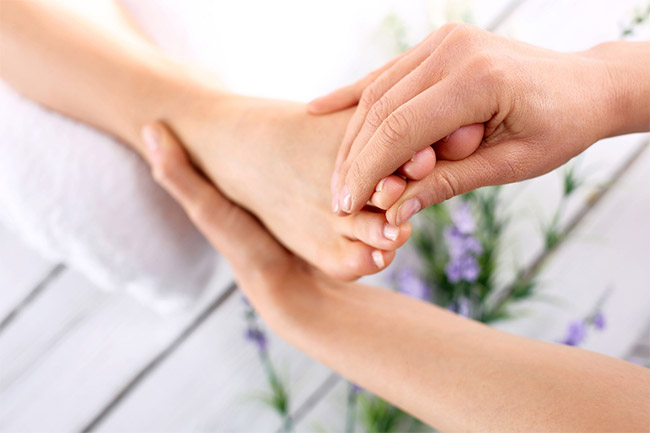
Work on the feet to bring about healing has been practiced as a healing method for thousands of years. Hieroglyphics and ancient paintings depicting Physicians working on the feet of their patient have been found in Egypt and India. Paintings from China also show similar treatments being done on the feet. Native Americans also have a tradition of healing through the feet.
The modern history of Foot Zone Therapy begins with Dr. William Fitzgerald, (1872-1946) an American nose and throat surgeon. He developed a theory describing the electrical circuits or meridians in the body. In the early 1900’s he mapped the 10 invisible energy pathways that run up and down the body extending from the top of the head to the ends of the toes and fingers. He called these pathways “Zones”.
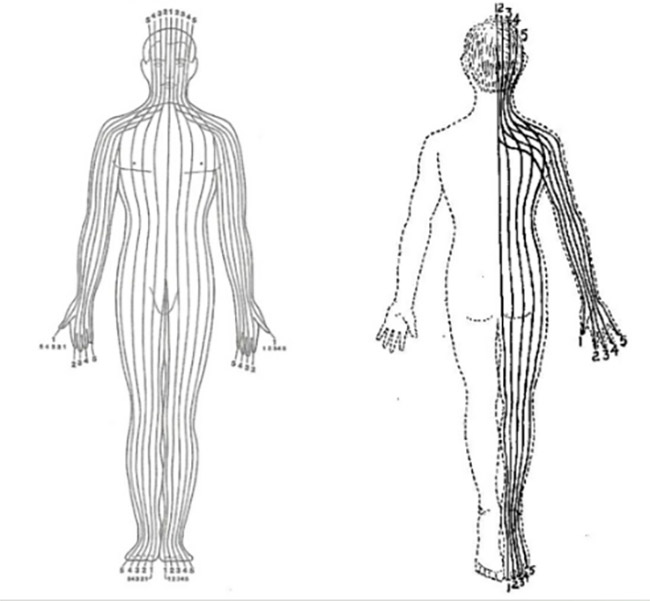
Dr. Fitzgerald recognized that by applying 2-10 pounds of direct pressure to certain areas along a specific energy pathway, he could stop pain or create an anesthetic reaction in the corresponding part of the body within the same pathway. Dr. Edwin Bowers documented his work and he and Dr. George Starr, a colleague of Dr. Fitzgerald, popularized this modality further by teaching others their method which they called Zone Therapy.
Dr. Joseph Riley, M.D., N.D.
Dr. Joe Riley, M.D., N.D., was the owner of Riley School of Chiropractic. He invited Dr. Fitzgerald to teach Zone Therapy at the school. Dr. Riley practiced this method extensively, building upon the foundations and theories of Zone Therapy. He discovered that the zones mapped by Dr. Fitzgerald extended to the bottoms of the feet. He also developed a hooking technique.
Eunice D. Ingham
Eunice D. Ingham, a therapist in Dr. Riley’s office, worked with Dr. Riley to map the points on the bottom of the feet and their correlating body parts. They called these points “reflexes”. Eunice Ingham named the modality Reflexology, wrote books on the modality, and traveled around the country teaching Reflexology.
Ingham’s book, Stories the Feet Can Tell, became popular in Switzerland and from there entered German speaking countries. Reflexology became known internationally through the efforts and writings of Hanne Marquardt (Germany) and Doreen Bayly (England) two students of Eunice Inghams who traveled to America to study with her and then took her teachings back to their respective countries. In Germany, the modality was known as Reflex Zone Therapy.
Dr. Charles Ersdal, M.D., M.A.
In the 1960`s a Norwegian named Dr. Charles Ersdal, M.D., M.A., was cured of paralysis after receiving Reflexology treatments from Einar Svendsen for two years. This experience led to 26 years of intense research. He determined that the body contains its own innate healing intelligence which is stimulated or triggered through specific and intricate Foot Zone Therapy. This method utilizes the feet’s natural “signal” system to establish balance, elevate your life energy, and renew cells in the body.
Importantly, he discovered that the body would consistently respond as an interrelated whole rather than as separate symptomatic parts. During this time of research, Dr. Ersdal was able to chart the human anatomy as it relates to these “points” on the foot. He charted the entire physiology including the brain, blood and lymph circulation, and musculature. Zone Therapy has been found to be a “signal”, or electro-magnetic system, rather than a reflex system and treats the body holistically rather than symptomatically. By squeezing, pressing, rubbing and manipulating the surface and deep tissue fascia of the foot in specific areas, the trapped energy is released, and the energy pathways flow freely again. Painless, unobstructed flowing energy represents a healthy body.
It is extremely important that your Foot Zone Therapy treatment be administered by a Certified Foot Zone Practitioner. Much more occurs during a session than meets the eye, and practitioner experience is essential to achieving full physical, mental, and emotional benefit. A session typically lasts for 60-90 minutes. Multiple and consistent sessions over a two-month period are recommended to detoxify and establish the body’s restorative process. After this period, you and your Practitioner will determine a schedule based on your individual needs and condition. You will find that your body will tell you when it’s time for a Foot Zone.
Learn More About Reflexology & Foot Zone Therapy
- Foot Reflexology: A Brief History
- The History of Foot Zoning in America
- Benefits and What to Expect
- FAQ About Foot Zone Therapy
The History of Foot Zoning in America
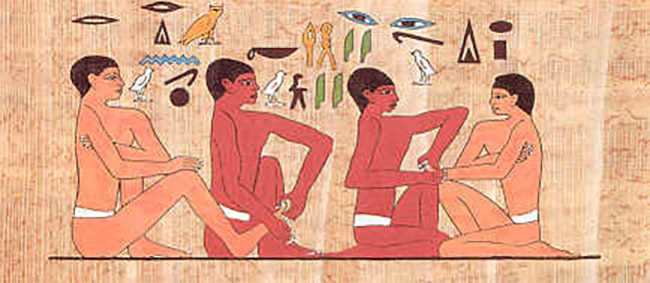
In 1979, Ed and Ellen Case of Los Angeles were touring Egypt and discovered and brought back an ancient Egyptian papyrus scene depicting medical practitioners treating the hands and feet of the patients. They found six pictographs of childbirth, dentistry, embalming, pharmacology, and reflexology in the tomb of Ankhmahor (the highest official after the king) at Saqqara (the physician’s tomb) near Cairo. These pictographs and papyrus scenes dated back to 2500 BC.
Traditional East Asian foot reflexology is called Zoku Shin Do. The foundation of this foot portion of the Japanese massage technique goes back to ancient China and is over 5000 years old.
Foot zone therapy was used as a healing method in India and China and is documented in Inca ruins from the early 6th Dynasty, about 2330 BC. Energy work through the feet also has roots in ancient East Indian, Arabic, Grecian, Russian, and European sources. Primitive African and Native American Indian cultures have also developed their own modality of healing through the feet.
The Cherokee tribes of North America practice a form of foot zone therapy. In the 1690’s, Jim Rolls, a Cherokee Indian, said pressure therapy on the feet to restore and balance the body has been passed down through the generations. Jenny Wallace, a Cherokee Indian from the Blue Ridge Mountains of North Carolina says the clan of her father (Bear Clan) believes that feet are important. “Your feet walk upon the earth and through this your spirit is connected to the universe. Our feet are our contact with the Earth and the energies that flow through it.”
William FitzGerald
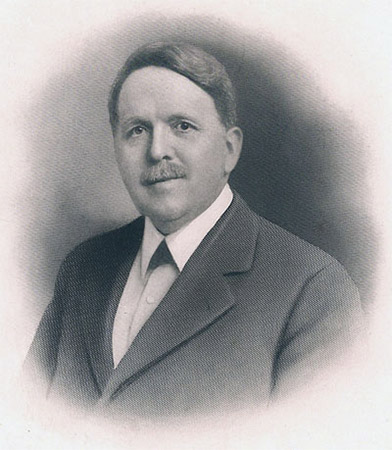
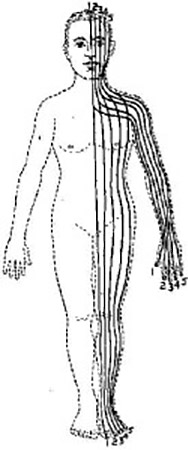
Many people and cultures deserve the credit for the development of foot zone therapy. However, the rediscovery of foot zoning in America began in the early 1900’s when Dr. William H. FitzGerald theorized that the human body was divided into ten zones, connected by the nerves that carry the impulses. He devised the system of mapping the body into five zones on each side of a median line. These zones run the length of the body from the head to the feet. He called these zones the “ten invisible currents of energy” through the body and demonstrated the correlation between the reflex points on the feet and areas in distant parts of the body. Dr. FitzGerald showed how a pressure of between 2 and 10 pounds on a given finger or toe could alleviate pain anywhere in the corresponding zone in the body.
Dr. FitzGerald was the senior nose and throat surgeon of St. Francis Hospital in Hartford, Connecticut. While working in Vienna, Dr. FitzGerald encountered Dr. H. Bressler who was investigating the possibility of treating organs with pressure points. At this time, Dr. Alfons Cornelius published his book “Pressure Points, their Origin and Significance.” When Dr. Fitzgerald returned to America, he used Zone therapy to deaden pain, replacing drugs in minor operations. He treated lumps in the breast, uterine fibroids, respiratory problems, and eye conditions. Through his studies, Dr. FitzGerald was able to map the ten zones of the body.
He called his work Zone Analgesia where pressure was applied to the zones corresponding to the location of the injury. He also used pressure points on the tongue, palate, and the back of the pharynx wall to achieve the desired result of pain relief or analgesia.
Dr. FitzGerald discovered a very interesting fact, that the application of pressure on the zones not only relieved pain but in most cases also relieved the underlying cause as well.
Publication of Zone Analgesia Benefits
One of his students, Dr. Edwin F. Bowers, a dentist, persuaded the editor of the Associated Sunday Magazines to publish a series of articles demonstrating the technique and outlining the successes. Accompanying the introductory article was this comment by the editor, Mr. Bruce Barton.
“For almost a year Dr. Bowers has been urging me to publish this article on Dr. FitzGerald’s remarkable system of healing, known as zone therapy. Frankly, I could not believe what was claimed for zone therapy, nor did I think that we could get magazine readers to believe it.
Finally, a few months ago, I went to Hartford unannounced, and spent a day in Dr. FitzGerald’s offices. I saw patients who had been cured of goiter; I saw throat and ear troubles immediately relieved by zone therapy; I saw a nasal operation performed without any anesthetic whatever; and – in a dentist’s office – teeth extracted without any anesthetic except the analgesic influence of zone therapy.
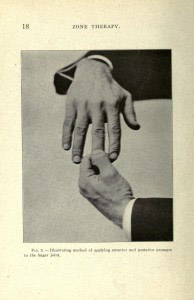
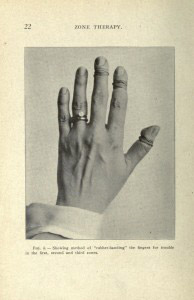
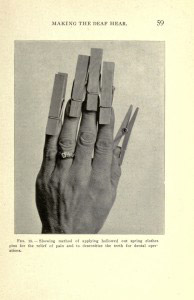
Afterward I wrote to about fifty practicing physicians in various parts of the country who have heard of zone therapy and are using it for the relief of all kinds of cases, even to allay the pains of childbirth. Their letters are on file in my office.
This first article will be followed by several others in which Dr. Bowers will explain the application of zone therapy in the various common ailments. I anticipate criticism regarding these articles from two sources: first, from a small percentage of physicians; second, from people who will attempt to use zone therapy without success. We have considered this criticism in advance and are prepared to disregard it.
If the articles serve to reduce the sufferings of people in dentists’ chairs even ten percent, if they will help in even the slightest way to relieve the common pains of every-day life, they will be amply justified.
We do not know the full explanation of zone therapy; but we do know that a great many people have been helped by it, and that nobody can possibly be harmed.”
These articles were later published (1917) in the book Zone Therapy or Relieving Pain at Home.
In Chapter II, the following technique is outlined for relieving a headache, “The next time you have a headache, instead of attempting to paralyze the nerves of sensation with an opiate, or a coal tar “pain-deadener,” push the headache out through the top of the head. It’s surprisingly easy.
It merely requires that you press your thumb – or, better still, some smooth, broad metal surface, such as the end of a knife-handle firmly against the roof of the mouth, as nearly as possible under the battleground and hold it there for from three to five minutes by the watch. It may be necessary, if the ache is extensive, to shift the position of the thumb or metal “applicator” to “cover” completely the area that aches.
Headaches and neuralgias, of purely nervous origin, not due to poison from toxic absorption from the bowels, or to constipation, or alcoholism, tumors, eyestrain, or some specific organic cause, usually subside under this pressure within a few minutes.”
Dr. Joseph Riley
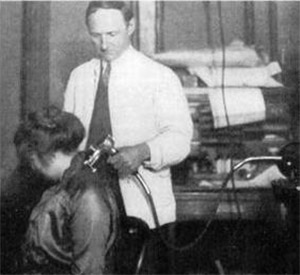
Dr. Riley uses a percussor for spinal concussion.
From 1913 to about 1920, Dr. FitzGerald was lecturing students at The Riley School of Chiropractic in Washington DC. Dr. Joseph Shelby Riley was one of Dr. FitzGerald’s students. Dr. Riley was a well-known Doctor of Chiropractic. He was also a teacher and administrator at The Riley School of Chiropractic, previously known as the Washington School of Chiropractic before being purchased by Dr. Riley. Through his studies, Dr. Riley added zones across the hands and feet. He also developed the “hooking” technique, recorded reflex points of the ear, face, and hands, and detailed the first diagrams of reflex points found on the feet. In 1918, Dr. Joseph Riley and his wife, Dr. Elizabeth Riley, published “Zone Therapy Simplified” in which they charted the first reflex zone map of the feet. In 1942, the 12th edition of “Zone Therapy Simplified” was published.
Dr. Eunice Ingham
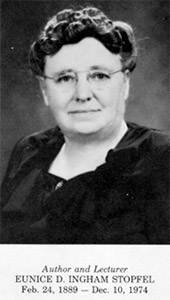
In the 1930’s Eunice Ingham worked with Dr. Riley in St. Petersburg, Florida. She was a chiropractor and physiotherapist. As she mapped the reflex points on the feet, Dr. Ingham found that the “reflexes on the feet were an exact mirror image of the organs of the body.” She continued to chart the feet and developed it into a protocol she called Reflexology. In 1938, she wrote, “Zone Therapy and Gland Reflexes” and “Stories the Feet Can Tell” which documented her cases and mapped out the reflexes on the feet. After the books were published, she toured America conducting workshops teaching how people can help themselves, family, and friends using her technique. In 1951, she published “Stores the Feet Have Told.”
Interestingly, at this same time in England, physiologist Sir Charles Sherrington was studying the spinal cord and later studied problems with spinal reflexes. He won a Nobel prize for proving that the whole nervous system and body adjusts to a stimulus then it is applied to any part of the body. He shared the Nobel Prize with Dr. Edgar Adrian a British electro physiologist, who studied the mechanism of nervous action, electrical studies of the neuron.
Dr. Charles Ersdal and Students
Terje Varpe (one of Ersdal’s first students in Norway), Einar Svendsen
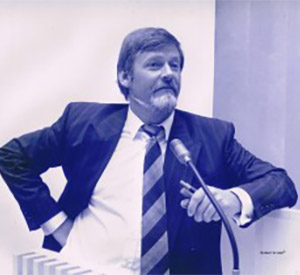
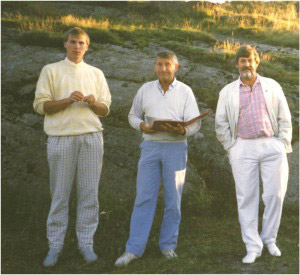
Courtesy Robert Ersdal and Terje Varpe
Charles Ersdal was born in 1939 in Bakke, Norway, in the Flekkefjord municipality. He was the second of 7 children. His father worked in the construction industry while his mother took care of the family home and farm. Charles pursued his education while working in the field of mechanics at the Kristiansand Mechanics workshop. He advanced quickly through the ranks and his interest in mechanics led him to continue his education in the field of technical drawing. Charles opened his first mechanical company in Stockholm which grew rapidly. But as the years went by, he became homesick.
Charles decided to return home and in 1963 he established his first company in Norway. The company mainly supplied services to various parts of the mechanical industry and shipbuilding industry. The firm also delivered special services in welding. During only a few years, his company grew quickly and employed many employees. Charles led the firm himself, working long hours. As the result of stress and job pressures, Charles had a serious stroke which resulted in paralysis to the left side of his body.
It was during this period of his life that Charles encountered alternative therapies. He learned of the reflexology technique and allowed his friend, Einar Svendsen, a chiropractor who had been trained in the reflexology technique, to treat him. Einar treated Ersdal over a period of two years resulting in the cure of his paralysis.
This peaked Ersdal’s curiosity and changed his thoughts on his future career. Charles began a lengthy education in Alternative Medicine at the European College of Natural Medicine in Germany. Charles studied Anatomy, Physiology, Pathology, Chiropractic, homeopathy, phytotherapy, acupuncture, ear acupuncture, and of course an in-depth study of reflexology. He was particularly interested in discovering why reflexology treatments were successful with some patients, as they had been for him, but were not successful for others. One night as Charles was sleeping, he received the answer to his question in a dream. He was told that the body needed to be treated in its entirety and not only in reflex points. In his dream, he was shown the placement of the spine, the organs, and systems of the body as they are scaled down three dimensionally on the feet. Charles awoke and drew the map of the body as he had been shown in his dream. He continued his study of the human body and physiology and continued mapping the body on the feet.
Center for Alternative Medicine Courtesy of Robert Ersdal
In 1975, Dr. Ersdal held his first class teaching the Foot Zone Technique. This class was held in Norway. In the mid-1980’s he opened a clinic in Kristiansand, Norway, called the Centre for Alternativ Medisin, where he treated patients and taught his method of Foot Zone Therapy. There was a total of seven therapists at the clinic including Charles’ son, Robert Ersdal, and Robert’s wife, Helen Ersdal. Charles continued his research, identifying and systematizing the Foot Zone Technique with detail. He wrote extensive teaching material, including, “The Complete Treatment System”, which describes a specific and accurate processing technique.
As a result of his work, Charles was a highly sought-after lecturer. In addition to teaching at his clinic in Norway, Charles also taught in Finland, Sweden, Russia, Estonia, Mexico, and Canada, and was a permanent lecturer and at the European College of Natural Medicine in Germany. It was while he was teaching at the College in Germany that Katri Nordblom first met Charles Ersdal. Katri was living in Sweden at the time but traveled to Germany during the summer, Easter, and Christmas holidays to take courses at the College.
The Foot Zone Technique is Brought to America
Foot Zone Class Material
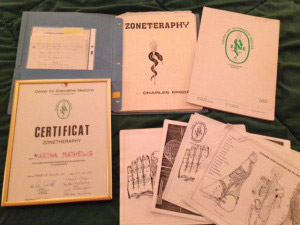
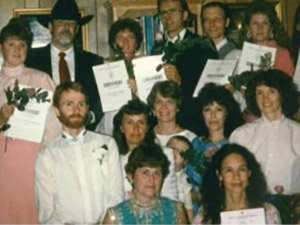
Courtesy of Martha Libster
After moving to America in 1989, Katri discovered that people were interested in learning Ersdal’s method of Foot Zoning so she invited Ersdal to America to teach a group of people from the community. Ersdal’s first class in America was in June 1989 in Montana. Over the course of the next three years, Ersdal traveled to America two to three times a year teaching his methods. He would hold classes over a period of about five days discussing physiology in depth before demonstrating his Foot Zone Technique. Classes were held in Montana, Wisconsin, Minnesota, Wyoming, Nevada, and Idaho at the invitation of Katri Nordblom and Christine Horvath. Christine was a student of Ersdal’s who lived in Minnesota.
When Ersdal first began coming to America to teach, although he was able to speak conversational English, he taught much of the anatomy portion of the class in Latin and would lecture in Norwegian with Katri’s husband, Hans, translating into English. As Ersdal became more proficient in English medical terms, he began teaching classes without the assistance of a translator. The first maps of the feet made available to his students were labeled in Norwegian but later maps were in labeled in English.
1st Graduating Class in America - March 1991
Back row: Marita Zachrisson, Charles Ersdal, Tonya Gomman-Swan, Bob Personnette, Jan Johanson, Sherry (last name unknown), Unknown
Middle Row: Hans Nordblom, Katri Nordblom, Robin Foline, Joshua Goman (Tonya’s son) Mary Jo Morgan, Julie Holdregger
Front row: Inbrit Stein, Bernadette Jagiello
During this time, word of Ersdal’s methods began to spread and many people did not want to wait for him to visit America so they would travel to his clinic in Norway to learn from Ersdal, two of those students included Julie Holderegger of Idaho and Martha Libster of Chicago, Illinois. Between Ersdal’s visits to American, previous students would work with current students to ensure proper placement of the hands on a client’s foot. Those teachers included Katri Nordblom, Christine Horvath, Julie Holderegger, and a gentleman by the name of Bob Personette. Although Ersdal’s map of the feet was very detailed, he realized that the treatment was incomplete and continued to study the body and its placement on the feet. Charles continued to develop treatments for the various Foot Zone signals throughout his life.
Others Begin to Teach
Katri Nordbloom recognized what she felt were limitations to Ersdal’s map of the zone and began teaching her own method of the Foot Zone Technique which she called FootZonology®. Martha Libster began teaching her own method of the Foot Zone Technique, combining her knowledge and practice of Ersdal zone therapy with that of foot reflexology and nurse-herbalism. Robert Personnette began teaching his own classes too, calling his method BEZT. Other students of Dr. Ersdal began teaching what they called European Reflexology. All of them were building upon the Foot Zone Technique that they had learned from Dr. Ersdal by adding their own touch and their own treatments to his technique.
Ersdal continued coming to America and teaching in Minnesota at the request of Christine Horvath. After Charles Ersdal’s death on March 23, 1995, Christine Horvath received permission from Ersdal’s family to continue teaching Ersdal’s method of Foot Zoning using Charles’ very detailed maps of the feet. She is the only person in America authorized to teach from his maps. Ersdal’s son, Robert, continues to run the clinic that Charles started in Norway.
The Legacy Continues
Like a cook who is given a recipe and adjusts to suit their tastes, students of Ersdal’s took what they learned from him and began adjusting and adding to his method, creating maps of the feet and zone techniques that reflected their understanding and education. Some opened schools, like Katri Nordblom and Martha Libster, others taught workshops independently to friends and neighbors who wanted to learn.
At this time, there are classes, seminars, and workshops held throughout America teaching the Foot Zone Technique. In addition to Katri’s school in Montana, the Nordblom American Institute of FootZonology, you can learn the foot zone technique from schools such as We Do Feet with locations throughout Utah, Idaho, and Nevada, or the Academy of Foot Zone Therapy which holds classes in Utah, Arizona, Washington, and Nevada. Christine Horvath continues to teach the foot zone technique, using Ersdal’s maps of the feet, in Minnesota. Martha Libster includes information on the foot zone technique in her Integrative Nursing program at Golden Apple Healing Arts in the Chicago suburb of Wheaton, Illinois.
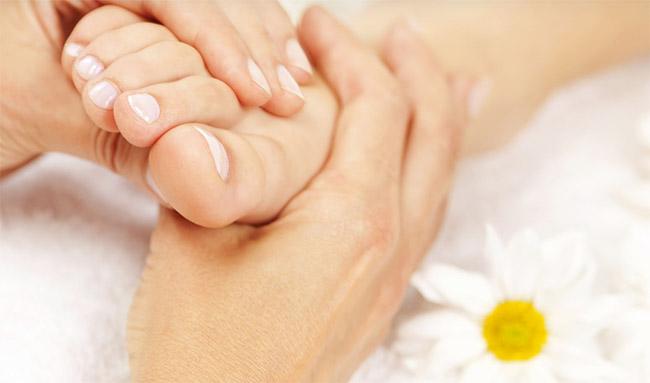
Benefits from a Foot Zone Session vary from person-to-person, but reported benefits include:
- Release of tension
- Cleansing of the body of toxins
- Improvement in circulation
- Increase of the body's energy system
- Creates a state of homeostasis and balance
- Helps build a strong immune system
- A quicker response time for health after injury or illness
- Relationships can be improved
- Harmony and peace in your home and life
- Reactions
Similarly, each body will respond differently as it begins to reach homeostasis. However, reported reactions after a foot zone include:
- Colon becomes more active
- Change in sleep patterns
- Deep state of relaxation
- Increased energy
- Joints become more mobile
- A feeling of hormonal balance
- Your body becomes fertile - watch out!
- Life becomes easier
- Emotionally more stable
- Your spouse is not the bad guy anymore!
Commonly Asked Questions About the Foot Zone Technique
Are you new to Foot Zone Therapy? If so, it’s natural to have questions about this modality that uses pressure points on the feet to access and bring balance to the body.
Below are some commonly asked questions about the Foot Zone Technique.
If your question isn’t answered below, you’re welcome to contact me and I’d be happy to answer any other questions you might have. Or better yet – schedule a session and find out for yourself what Foot Zone Therapy is all about!
What results can I expect?
After a session most people will feel very relaxed. They may also feel refreshed and revived or extremely tired. Either response is fine. Remember that the body heals when it sleeps so if you feel tired after a zone, allow your body time to relax and rebuild.
The purpose of the zone is to help bring the body into balance. The body knows what it needs to work on, in the order it needs to be worked on. Because it can take up to four days after a zone for the body to accomplish what the zone has set in motion, there have been times when a client felt relaxed and fine after the zone and three days later face-planted on the bed and slept for 12 hours. It’s all part of the body’s energy systems balancing themselves.
The foot zone technique treats the body as a whole and doesn’t treat specific diseases or problems but rather balances the body to bring it to a state of homeostasis. Although I cannot claim direct healing effects and cures, I have seen remarkable results during and after a session. There have been many people that have experienced relief from headaches, back pain, digestive and sleep disorders, depression, auto immune failure, the common cold/flu, relief of stress, difficulty in conception, and many other health problems.
Does it hurt?
When the signals on the feet are blocked, it’s my job to try to open them back up. Most people will feel pressure or a slight burning in the area that is being worked if the signal is off. Of course, not every signal will be blocked, but for those that are, the discomfort only lasts as long as I’m on the signal. Because I trust the body to bring itself into balance, I don’t force a signal to open but rather I stimulate it which allows the body to do what it needs to do to open the signal. That means that a signal may be blocked for only one session or for a few.
Either way, I work directly with you and communicate with you throughout the session to determine the level of pressure that is right for you. My purpose is not to kill you with pain to but to assist the body so it can heal itself.
How long does a foot zone session last?
The foot zone itself will typically take about 45 minutes. The size of the feet will play a part and feet that have a lot of blocked signals will take slightly longer than those whose signals are open.
However, a session with me typically will take about 60-90 minutes. Why the additional time?
We will spend a few minutes discussing any concerns and reviewing any Self-Help questions you might have.
I’ll muscle test for the essential oils that will be the most beneficial during and after your foot zone.
Following the foot zone technique, we will review any blocked signals with you, and go over Self-Help recommendations.
All of this adds up to a little longer session time, but I find that including additional energy work and wellness consulting in a session result in increased and longer-lasting benefits for the client.
Could I have any side effects?
Side effects evoke bad images, so while I don’t think you’ll have side effects, there are possible effects. Remember that the body is bringing itself into balance so there are several responses that may occur.
- Some clients feel energized with more vitality.
- There may be a change in sleep patterns. Your sleep may become deeper and calmer, or dreams may be more active.
- Fatigue. Your body may respond by needing more sleep so it can rest and repair.
- Emotional or psychological releases may result in crying or laughing.
- Your digestive system may be more active.
- There may be increased skin activity or perspiration.
- You could have greater clarity of thought.
- There may be a release of stress and a feeling of being more in balance.
- Frequent urination and detoxification may occur.
How each person responds to a foot zone session is unique to them and their situation. While there will most likely be some effects from a zone, they’re all part of your body coming into balance. Most people find it helpful to flush their system by drinking three glasses of water after a session and being sure to drink at least half their weight in ounces of water a day, especially for the next 3-4 days as the body completes is cycle after the zone. Adding juice from a lemon also helps support the body as it releases toxins.
Can this help with my emotions?
During a foot zone session, I am balancing all four parts of the body. It is believed that the signal system is a connecting link between the physical, emotional, mental, and etheric/spiritual bodies. It is also understood that the foot zone stimulates and helps balance the endocrine system of the body.
Because all four parts of the body are connected, by stimulating all four bodies, imbalances can be addressed holistically and, in the order necessary to bring about balance more effectively. This may result in some emotional releases, but only for the good of the client.
That said, how much is released and how quickly it is released, is up to you. If you do not want emotions released, they will not be. The emotional, mental, and etheric/spiritual bodies are controlled by the subconscious mind of the client. Many times, the client isn’t ready to address more emotional issues until after they’ve had a few sessions and have developed a certain level of trust in the process. That’s ok. Things will release, and the body will balance, in the order that it needs to and when it’s ready to.
Everybody has issues that need to be dealt with. If we brought all of them to the surface in the first zone, the body wouldn’t be able to deal with them and would more than likely go into a healing crisis.
How often should I be zoned?
That really depends on you.
If you’re working on a “project” something that has a “label” then I recommend that my clients really “hit it hard” and for the first 3 sessions, come every week; for the next three sessions, come every other week; for the next three sessions, come third week; and then for the next session come four weeks later and let’s re-evaluate. By then you’ve had 10 sessions, and you can get a good feeling for how your body is responding and any benefits.
For clients who don’t have a “project” and are coming in for a Foot Zone Session to help bring balance and homeostasis, it really is up to you and how you feel. Listen to your heart and your body. You will know when it’s time for another session.
Do you use a tool?
I don’t use a tool. Some people will use specially designed rocks (gems) or sticks to help access and balance the signals, but I find that my thumbs and knuckles allow me to feel and balance the signals on the feet quite well.
Who cannot be zoned?
There isn’t anyone who wouldn’t benefit from a Foot Zone Session! It used to be believed that those with organ or tissue transplants, pacemakers, shunts, and stints should avoid foot zone sessions. It’s since been discovered that this is not the case and many clients with “foreign objects” in the body have reported that complications have disappeared after experiencing Foot Zone Sessions with an experienced, Certified Practitioner.
Can I learn the Foot Zone technique?
Absolutely! There are instructors for We Do Feet in Grand Junction, CO and we believe that every family should have a way to access the body in times of stress and sickness and to bring balance in the home. The training for the Foot Zone Technique takes place over a nine-month period. Classes are held two days, once a month, allowing the student to take the rest of the month to practice and study. Each class is broken down to give you thorough and complete instruction, concept-by-concept, before moving on to teach the next module. During the first 4 classes you’ll learn the foot zone map and technique. During the next 5 classes you’ll learn ways to support and perfect the zone technique and they will help progress from following a “map” to “feeling the signals.” Along the way, you’ll also learn the principles of success. This training is designed to help you be the best foot zone practitioner you can be.
If you would like more information on classes, the curriculum, or what it takes to learn the Foot Zone Technique, please feel free to call Vanessa Young (970) 260-9669 for more information.
